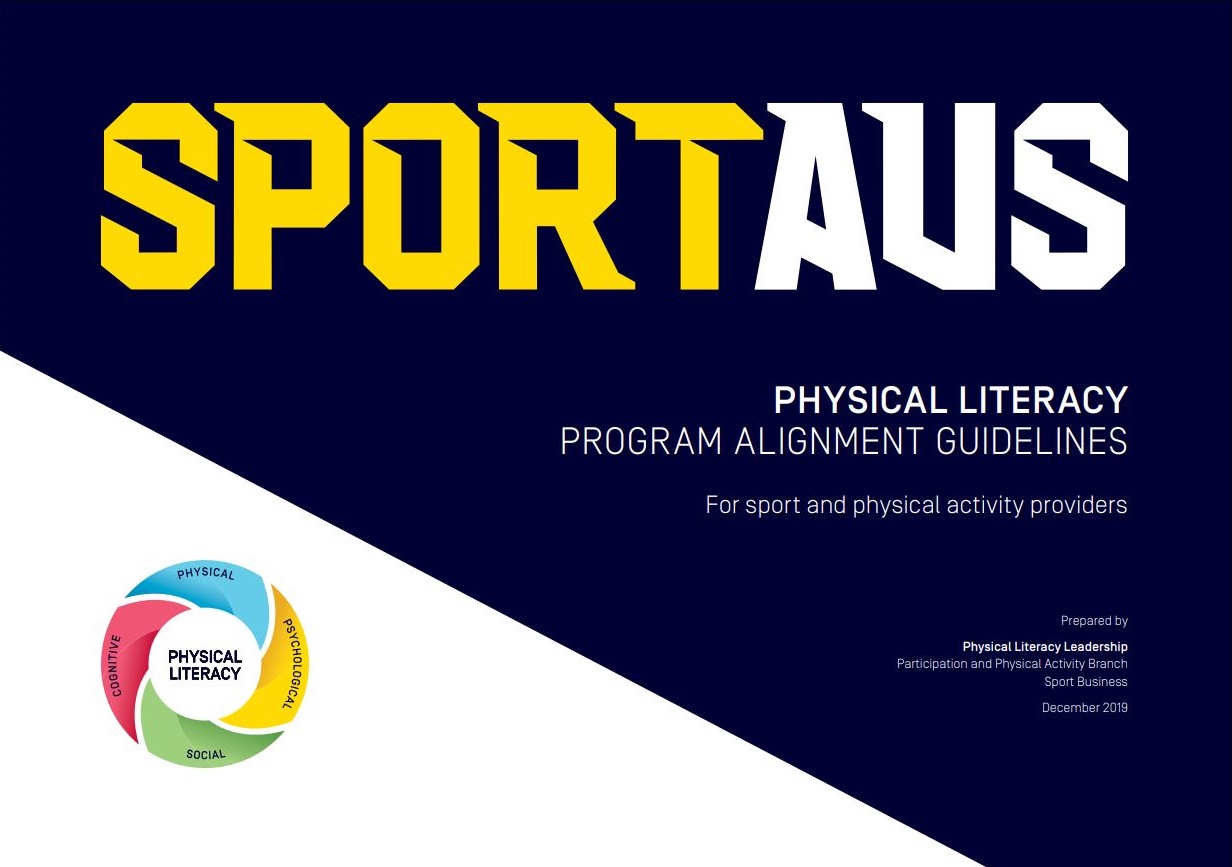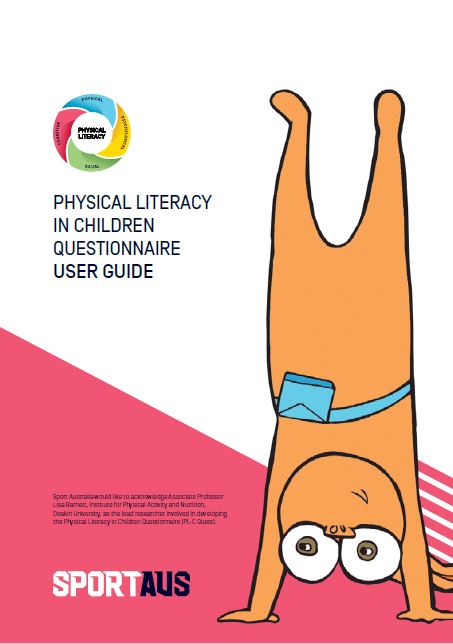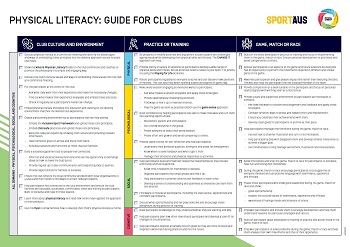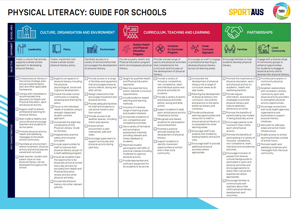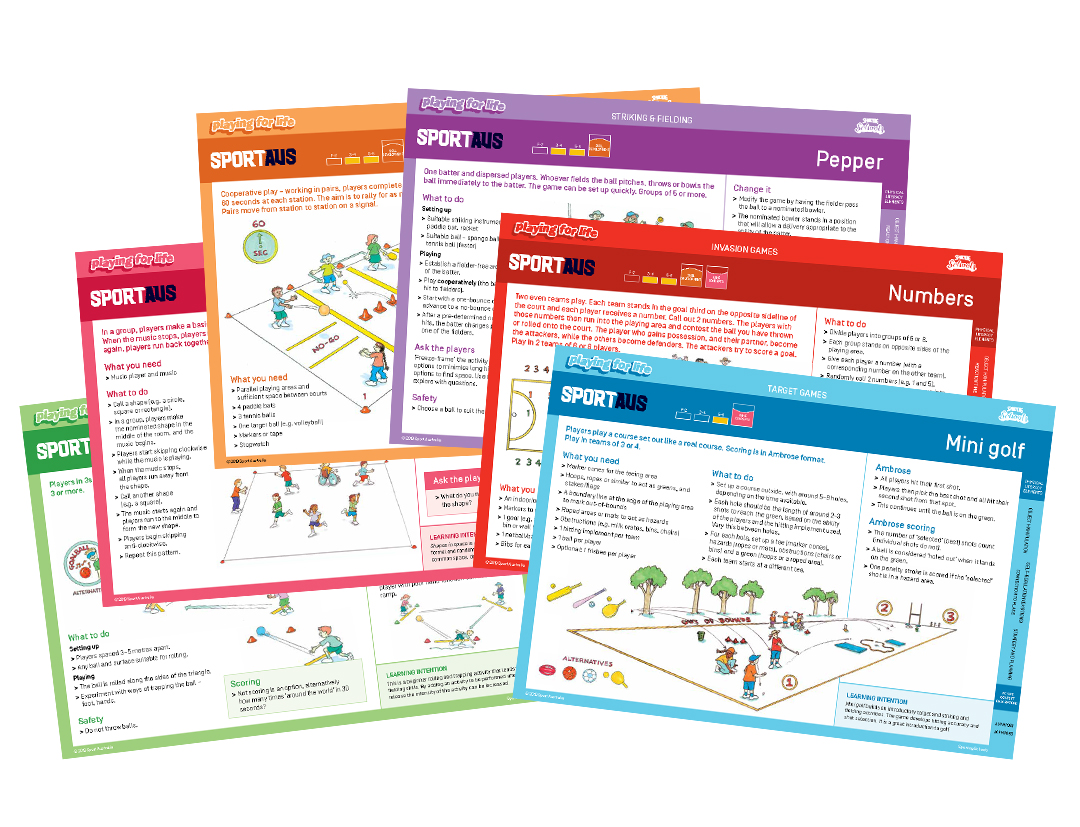Physical Literacy Program Alignment Guidelines
The sport and physical activity sector plays a vital role in building the skills, knowledge and confidence of participants to lead active lives, contributing towards broader societal outcomes. The Guidelines will assist sport and physical activity providers to align new and existing programs to a physical literacy approach that celebrates and enhances participants’ holistic development.
Physical literacy alignment is the process of adapting or developing programs, products, resources and strategies to help participants develop lifelong engagement in sport and physical activity.
Aligning can help your organisation:
- take a holistic and participant centred approach
- identify opportunities for improvement
- deliver professional development
- find and tell your program’s story
- create new ideas and program innovations
- increase program retention and sustainability
- deliver a program that motivates participants to be active for life.
Physical Literacy in Children Questionnaire
The Australian Sports Commission identified the need to measure a child's perceived level of physical literacy and engaged Deakin University to develop the Physical Literacy in Children Questionnaire. In this fun questionnaire, children view images of a bunny type character in 30 different sport, physical activity and movement scenarios and chose the one that best represents their ability. The scenarios align with the 30 physical literacy elements in the Australian Physical Literacy Framework.
This holistic view of a child's physical literacy helps researchers and people working in the sport sector develop programs that support children on their physical literacy journey and increase their chance of being physically active for life.
Use the questionnaire to:
- determine the effectiveness of sport, physical activity and teaching interventions
- better plan sessions to support children develop their physical literacy
- track children's progress over time
- measure population levels of children's physical literacy
- help measure government initiatives.
Learn more about the Physical Literacy in Children Questionnaire by reading the User Guide.
The Physical Literacy in Children Questionnaire is exclusively available for use by tertiary institutions for research purposes. Please email physical_literacy@ausport.gov.au to request access to the questionnaire.
Physical Literacy Resources for Clubs
The Physical literacy Guide for Clubs and Benefits for Clubs resources have been developed to help local sporting clubs embed physical literacy throughout the organisation. The guide outlines practical ways to put physical literacy at the heart of your club culture and environment, including training and games. The benefits document explains how physical literacy is valuable for clubs, including their participants, coaches and deliverers.
Physical Literacy Toolkit for Schools
The Australian Sports Commission, in partnership with ACHPER Victoria, developed the Physical Literacy Toolkit for Schools to support schools to embed physical literacy and bring it to life in their school.
The toolkit includes the Physical Literacy: Guide for Schools, which defines the ideal school environment for optimal impact on increasing children’s physical activity and physical literacy. It also includes an implementation plan, templates, evidence of the benefits for students and tips for developing each component of the guide – all designed to assist schools on their physical literacy journey.
Playing for Life Activity Cards
Playing for Life activities and games are a great way to help children develop physical literacy. The cards are designed for everyday use by teachers, coaches, out of school hours care staff and parents.
Aligned to the Australian Physical Literacy Framework and the Australian Curriculum, these game based activities are easily adapted to different sports and help create a safe, inclusive and challenging environment for children.
